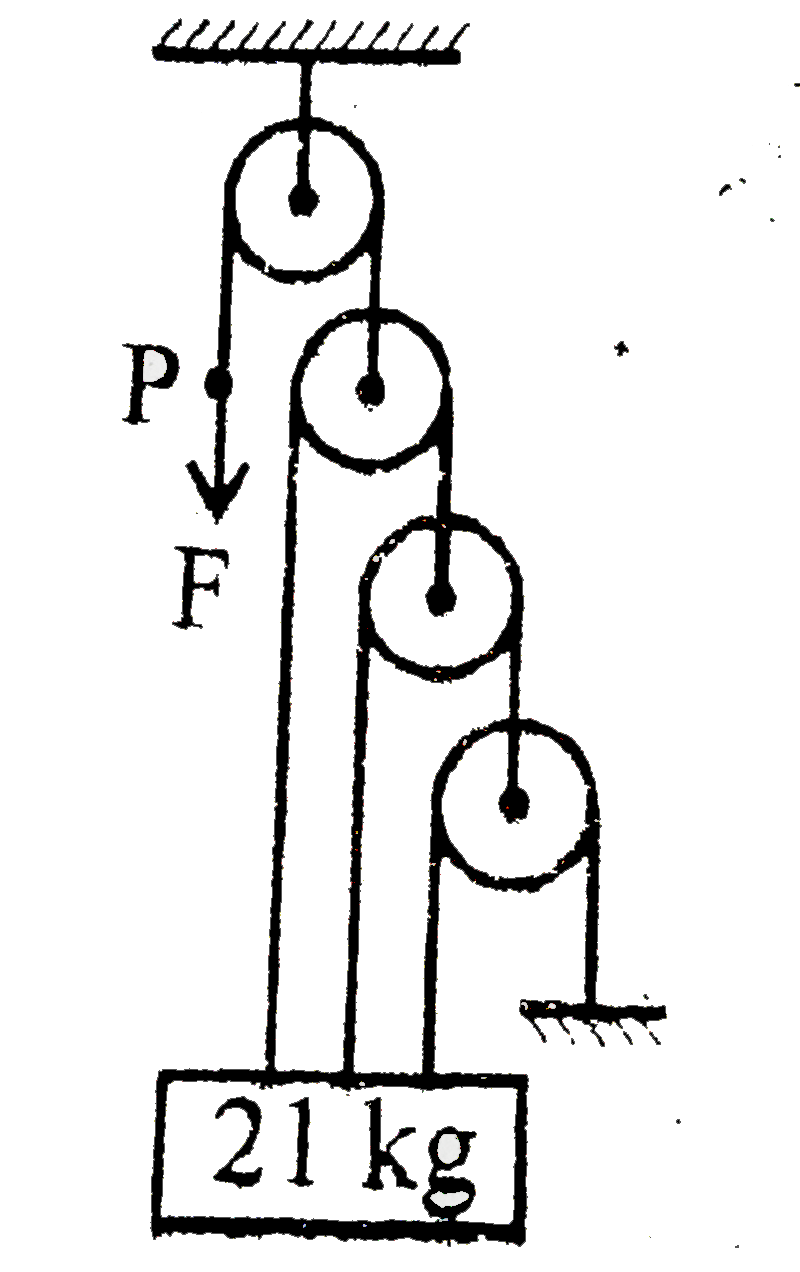A man carries a load of 5 kg on his head through a distance of 10 m. the minimum amount of work is done when he
Move it up an inclined plane
Moves it down an inclined plane
Moves it over a horizontal surface
Lifts it vertically upwards.
The correct Answer is:C
To solve the problem, we need to understand the concept of work done in physics. Work done (W) is defined as the product of the force (F) applied to an object and the distance (d) over which that force is applied, in the direction of the force. Mathematically, it can be expressed as:
W=F⋅d⋅cos(θ)
where:
- W is the work done,
- F is the force applied,
- d is the distance moved,
- θ is the angle between the force and the direction of motion.
1. Identify the Weight of the Load:
The load carried by the man is 5 kg. The weight (force due to gravity) can be calculated using the formula:
F=m⋅g
where g is the acceleration due to gravity (approximately 9.81m/s2).
F=5kg⋅9.81m/s2=49.05N
2. Consider Different Scenarios:
- Moving Up an Incline: The force exerted is against gravity, and the angle θ is not zero, resulting in more work done.
- Moving Down an Incline: The force of gravity assists the movement, reducing the effective force needed to move the load, hence minimizing work done.
- Moving Over a Horizontal Surface: The force of gravity acts downward, but the movement is horizontal, resulting in a θ of 90 degrees, which means no work is done against gravity.
- Lifting Vertically Upwards: The entire weight must be lifted against gravity, resulting in maximum work done.
3. Determine the Minimum Work Done:
The minimum work is done when the man moves the load down an incline. In this case, the gravitational force assists the movement, and the effective force required to move the load is reduced.
4. Conclusion:
Therefore, the minimum amount of work is done when the man moves the load down an incline.
Final Answer:
The minimum amount of work is done when he moves it down an incline plane.
- W is the work done,
- F is the force applied,
- d is the distance moved,
- θ is the angle between the force and the direction of motion.
The load carried by the man is 5 kg. The weight (force due to gravity) can be calculated using the formula:
F=m⋅g
where g is the acceleration due to gravity (approximately 9.81m/s2).
F=5kg⋅9.81m/s2=49.05N
- Moving Up an Incline: The force exerted is against gravity, and the angle θ is not zero, resulting in more work done.
- Moving Down an Incline: The force of gravity assists the movement, reducing the effective force needed to move the load, hence minimizing work done.
- Moving Over a Horizontal Surface: The force of gravity acts downward, but the movement is horizontal, resulting in a θ of 90 degrees, which means no work is done against gravity.
- Lifting Vertically Upwards: The entire weight must be lifted against gravity, resulting in maximum work done.
The minimum work is done when the man moves the load down an incline. In this case, the gravitational force assists the movement, and the effective force required to move the load is reduced.
Therefore, the minimum amount of work is done when the man moves the load down an incline.
The minimum amount of work is done when he moves it down an incline plane.
Topper's Solved these Questions
- WORK, ENERGY AND POWERBOOK - AAKASH INSTITUTECHAPTER - WORK, ENERGY AND POWEREXERCISE - SECTION-B (SUBJECTIVE TYPE QUESTIONS) (ONE OPTIONS IS CORRECT)
44 Videos
- WORK, ENERGY AND POWERBOOK - AAKASH INSTITUTECHAPTER - WORK, ENERGY AND POWEREXERCISE - SECTION-C (OBJECTIVE TYPE QUESTIONS) (MORE THAN ONE OPTIONS ARE CORRECT)
16 Videos
- WORK, ENERGY AND POWERBOOK - AAKASH INSTITUTECHAPTER - WORK, ENERGY AND POWEREXERCISE - TRY YOURSELF
95 Videos
- WAVESBOOK - AAKASH INSTITUTECHAPTER - WAVESEXERCISE - ASSIGNMENT ( SECTION-D ( Assertion - Reason Type Questions ))
12 Videos
Similar Questions
Knowledge Check
A man carries a load on his head through a distance of 5 m. The maximum amount of work is done when he
AMoves it over an inclined planeBMoves it over a horizontal surfaceCLifts it vertically upwardsDNone of theseA body is moved through a distance of 5 m in the following different ways. Maximum work is done when the body is
Apushed over an inclined planeBraised vertically upwardsCpushed over smooth rollersDpushed on a plane horizontal surfaceA man carries a load of 50kg through a height of 40m in 25 seconds. If the power of the man is 1568W, his mass is
A5 kgB1000 kgC200 kgD50 kg
The P.E of a spring on stretching through a distance of 5 m is 20 J . Calculate the amount of work done on this spring on stretching it further through a distance of 2 m .
View SolutionWhat will be the work done by a man weighning 40 kgf and holding a body of 20 kgf on his head and moving a distance of 10 m up an incline of 10 m up an incline of 1 in 5 (Take g=9.8ms−2) ?
View SolutionIn the arrangements shown in figure, the pulleys are all massless. The load has a mass of 21 kg. the point P is moved by a distance of 2.5 cm. find the minimum work (in J) required to be done by the force.

View SolutionThe potential energy of a certain spring when stretched through a distance S is 10 joule. The amount of work in joule) that must be done on this spring to stretch it through additional distance S will be
View SolutionThe potential energy of a certain spring when streched through a distance 'S' is 10 joule. The amount of work (in jule) that must be done on this spring to stretch it through an additional distance 'S' will be
View Solution
